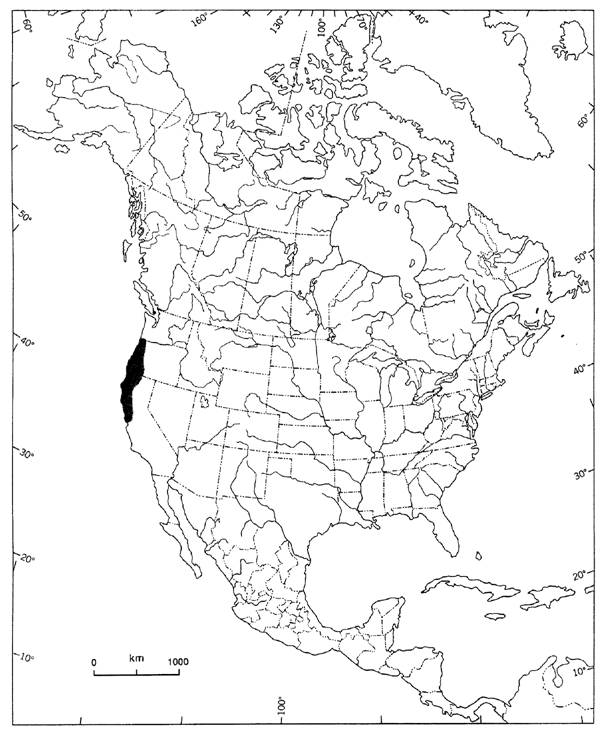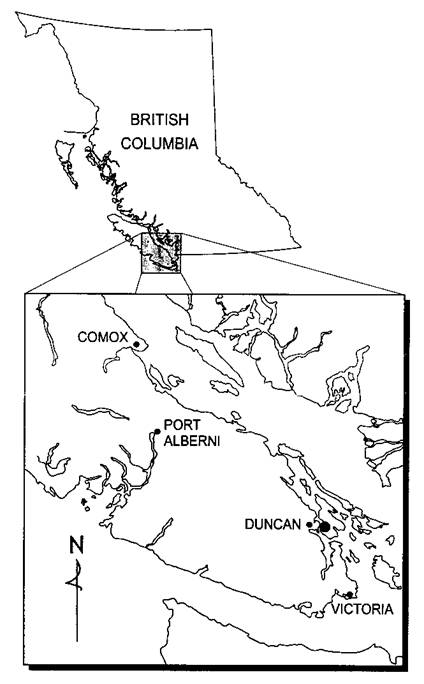Small-flowered tonella (Tonella tonella) COSEWIC assessment and status report: chapter 4
Distribution
Global range
The southwestern British Columbia occurrence of Tonella tenella is disjunct from its main range in southern Washington (Columbia River gorge), through Oregon to central California (Wetherwax 1993; Pojar 2000) (Figure 2). This range disjunction is a common occurrence for many of British Columbia’s peripheral native plants. This phenomena has been presented at length by Fairbarns et al. (2003) who stated that “…The sub-Mediterranean climate of Victoria and the Georgia Basin (including San Juan County) is anomalous along the Pacific Northwest coast and may account for the pattern of disjunct distributions of many "semi-desert species" as noted by Hitchcock et al. (1961) (e.g., Allium amplectens, Crassula connata, Clarkia purpurea ssp. quadrivulnera, Dryopteris arguta, Isoetes nuttallii, Juncus kelloggii, Minuartia pusilla, Lupinus densiflorus, Montia howellii, Myrica californica, Ranunculus californicus, Trifolium depauperatum, Triphysaria versicolor, Vulpia pacifica, and Woodwardia fimbriata, as well as the salamander, Aneides ferreus).”
Figure 2. Distribution of Tonella tenella in North America.

Canadian range
In Canada, T. tenella is known only from the west side of Saltspring Island in the Gulf Islands of southwestern British Columbia (Figure 3; Pojar 2000; Douglas et al. 2002a, b).This delicate and relatively inconspicuous plant was first documented in 1976 (Douglas and Douglas 1978) but has likely been present at the site for a considerable period of time since it is unlikely that previous botanists ever visited this steep, inaccessible slope.
Although it is difficult to ascertain, with a high degree of confidence, whether some recently discovered peripheral species are native it is probably best to assume they are native. Since the habitat is natural, it is likely that this species is native.In addition, it is likely a native population since it is comprised of several subpopulations; it would have taken some time to disperse and establish these subpopulations. Also, in the Species at Risk Act (Section 2.2), it states that for the purposes of a wildlife species in subsection 1, " a species, subspecies or biologically distinct population is, in the absence of evidence to the contrary, presumed to have been present in Canada for at least 50 years" (Government of Canada 2003). Therefore, since there is no support for the argument that it is a non-native species, it should be assumed to be native
Figure 3. Distribution of Tonella tenella in British Columbia ( ● - recently confirmed site).

Page details
- Date modified: